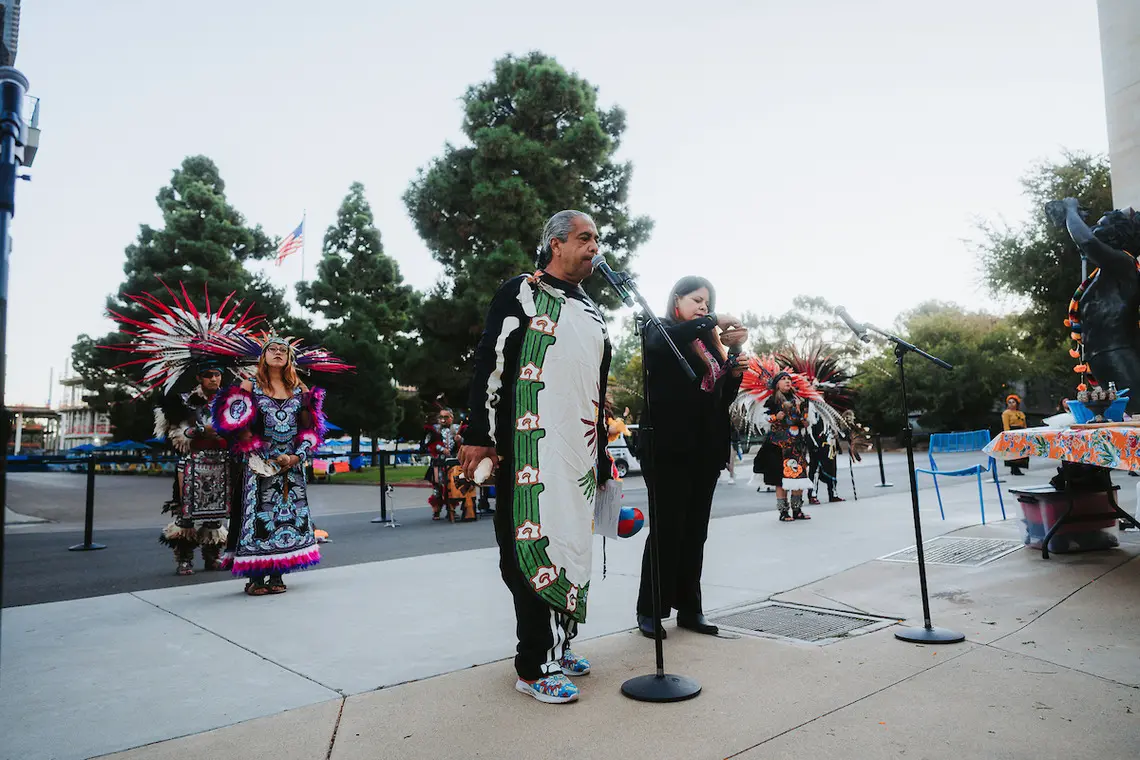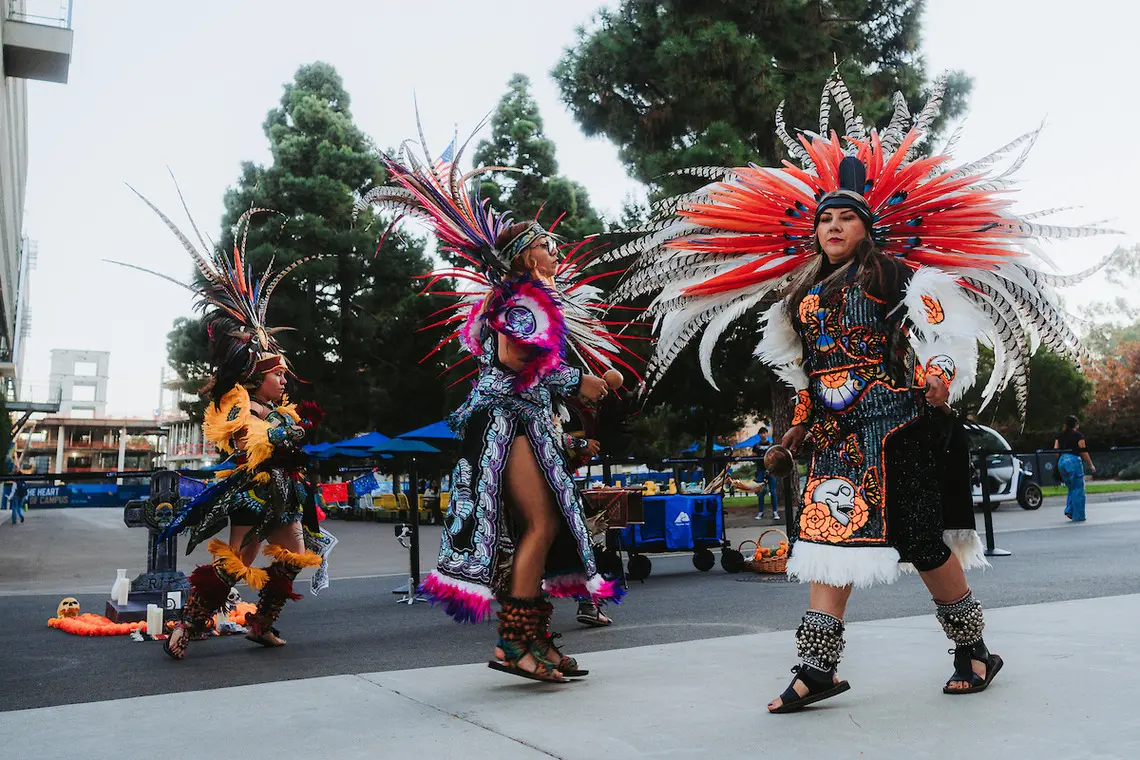A Colorful Celebration of Life: Campus Honors Día de los Muertos
Published Date
Article Content
UC San Diego marked Día de los Muertos with a vibrant celebration at the heart of campus, transforming the steps in front of Price Center into a joyful space of remembrance and reflection. Closing out the university’s Latinx Heritage Month commemoration, the Oct. 31 event invited the campus community to honor their loved ones and celebrate their lives through contributing to an altar and participating in a teach-in featuring local performers.
Día de los Muertos, or Day of the Dead, is a Mexican holiday rooted in indigenous traditions celebrated on Nov. 1-2 to remember loved ones who have passed away. As part of the tradition, families often create altars known as ofrendas, adorned with photos, candles, vibrant flowers, personal mementos, and favorite foods and drinks of their loved ones. Participants share stories and memories, turning the altar into a living tribute that celebrates the richness of their lives.



“In Mexican culture, Día de los Muertos commemorates the belief that your ancestors and loved ones come back to visit during November 1st and 2nd,” shared Berenice Jau, associate director of OASIS. “The ofrenda is how you commemorate them—you put the things that they loved on it, as well as candles and marigolds, called cempasúchils.”
This is the third year that Jau has been involved in coordinating the campus event. This year, she brought clippings from her grandmother's plants to display on the community ofrenda.
“It's not a holiday to grieve for our ancestors. It's to celebrate the fact that they were with us and their existence, that's part of why Día de los Muertos is so vibrant,” said Jau, pointing out the bright color of the cempasúchils that were displayed throughout the event.


Bright orange cempasúchil petals stood out against the tiered ofrenda at Triton Steps, adorned with papel picado—colorful, intricately cut paper banners. The ofrenda also featured calaveras, which are decorated sugar skulls that have become one of the most recognizable symbols of the celebration.
Throughout the day, campus community members visited the ofrenda to place photos and memories, collectively paying tribute to those close to heart. Participants could also write special notes to place on the ofrenda, sharing messages of love and remembrance.
"I think it’s very comforting to know that, even though you’re away from home, you can still bring pictures of family members or pets who have passed and place them somewhere they’ll be honored and able to visit. I think it’s really special,” said Selena Tadeo, an undergraduate student studying psychology.


As evening fell, a teach-in and live performances by Teatro Izcalli and Danza Azteca Kuahkoat brought the significance of Día de los Muertos to life, blending education with the rich traditions of the cherished holiday.
The ceremony began with an acknowledgment of Kumeyaay land. Participants were then invited to stand and honor the significant individuals in their lives—mothers, fathers, mentors, teachers, elders—and the earth.

Participants gathered to hear poetry and historical insights around the origins of Día de los Muertos. Dancers also took the floor, honoring millenia-old cultural practices through movement and rhythm.
Program leaders shared the significance of each element on the Día de los Muertos ofrenda. The unique cutouts of papel picado, once crafted from fig and mulberry bark, allow light to shine through, signaling the ancestors' presence at night. Copal incense, burned in a vessel called a copalera, cleanses the space and prepares it for rituals.
The ofrenda also commonly features a glass of water to quench the thirst of returning spirits and a small plate of salt to purify the area and ward off negative energies.


For Joseph Carmona, an undergraduate majoring in psychology and cognitive and behavioral neuroscience, this year’s community ofrenda was a special space to honor his uncle, Efren Delgado. Living in the dorms and finishing his fourth year of college, Carmona appreciated the opportunity to continue this tradition while being away from his family.
“I think it's very important to have something like this, and it’s good to share this tradition with others,” said Carmona. He emphasized that Día de los Muertos is a holiday anyone can participate in and expressed his admiration for seeing people from various cultures and backgrounds come together to honor those who have shaped their lives.

Share This:
Stay in the Know
Keep up with all the latest from UC San Diego. Subscribe to the newsletter today.



